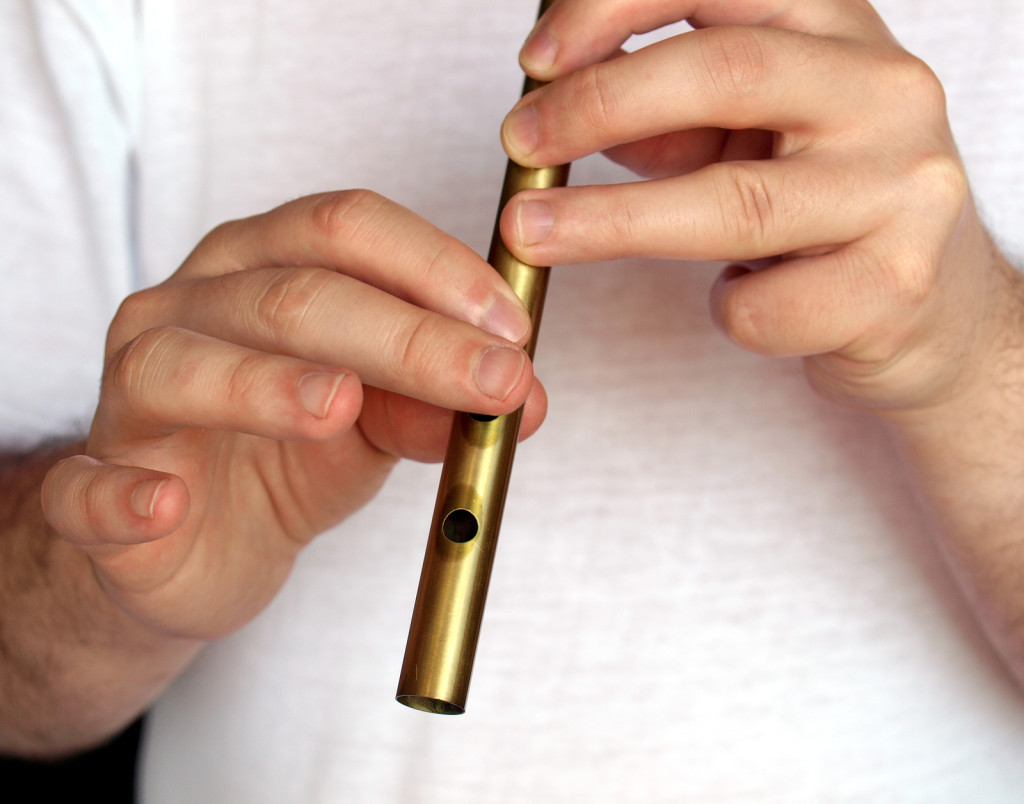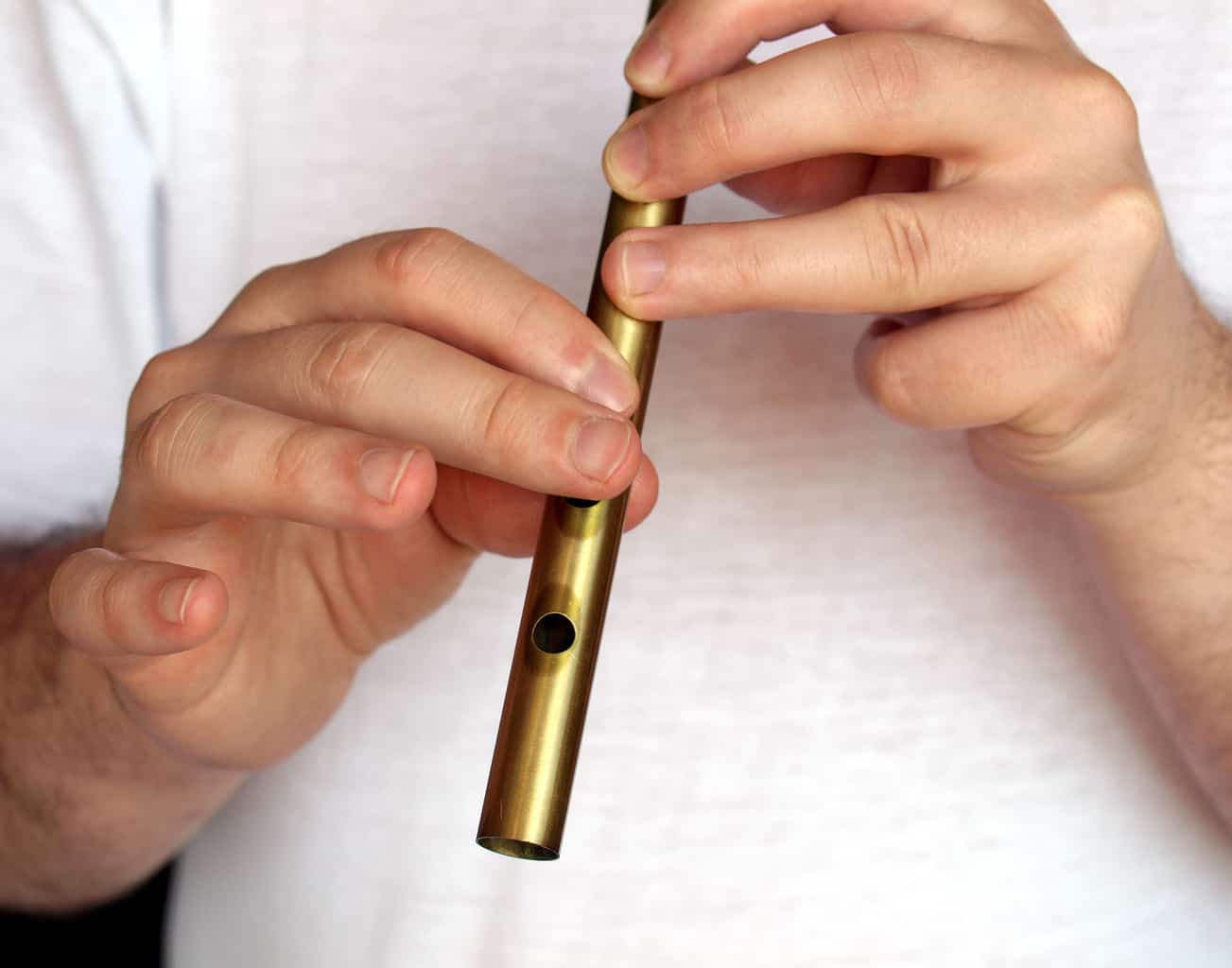
The tin whistle, popularly known as the penny whistle, is considered by many to be the most recognizable instrument within Irish traditional music. In England, it is recognized by various names like the Clarke London flageolet, the Irish whistle, the Scottish penny whistle, and the English flageolet. The tin whistle is quite similar to the Native American flute and belongs to the family of fipple flutes. The tin whistle has existed in different ancient forms in many primitive cultures dating back to 81,000-53,000 BC. More than 35,000 years ago, it’s believed that flutes were made from sheep’s bones. With the passage of time, the use of the tin whistle gained popularity in Irish, English, Scottish and American traditional music as well as during the revival of Celtic music.
If you’re interested in learning how to play the tin whistle, you’ve found the right page! Read on to learn how to play the tin whistle in 5 easy-to-understand steps.
Table of Contents
Step 1: Holding the Tin Whistle Properly
First of all, you must hold the tin whistle downwards at a 45 degree angle away from you. Your dominant hand should be at the bottom to keep the whistle steady while the other hand should stay on top. Place the tip of the whistle between your lips, not your teeth. When it comes to playing the penny whistle, the pinky is not usually used except while playing certain notes or using a larger flute.
Step 2: Learning How to Play the Notes
The second step is about learning how to finger the notes. The standard range of the tin whistle is two octaves including notes from D above middle C to the 4th D above middle C. In order to go one note higher, you’ll have to lift one finger. Watch this video for a more in depth look on fingering your first notes.
Step 3: Playing Your First Notes

Learning to play the lower octave notes using the right technique is important. Start by holding the penny whistle with all finger holes covered and blow a steady stream of air as if you’re trying to say too. This will produce a D on the D whistle. The trick to remember here is that you must not blow too hard or too softly. If you blow too hard, the sound will be unpleasant and squeaky. However, if you blow too softly, the note produced will be airy and almost nonexistent, so balance is the key here. Now move on by uncovering one more hole on the whistle to produce a C note and go further up until all the finger holes are left uncovered.
Step 4: Upper Octaves
Playing the upper octave notes is easy. All you have to do is cover all the holes and blow slightly harder than before to produce a higher pitch. If you can’t seem to get it right this way, try uncovering the first hole closest to your mouth and try again. Now repeat the same method as you did before and go on uncovering one hold at a time until you reach the highest note. As you go higher up the notes, you’ll have to blow harder – but not too hard, otherwise the tin whistle will produce a squeaky sound.
Step 5: Practice, Practice, Practice!
Now that you know how to play the lower and upper octave notes, you can easily play any piece of music transposed for a concert pitch instrument like piano, violin or flute, provided it is in the right key. You can also search for steady notes with smooth transitions to play once you’ve mastered the basics. These are the 5 easy-to-understand steps that will help you learn how to play the tin whistle in no time. Just like any other musical instrument, you can master the art of playing the tin whistle flawlessly simply by practicing as much as possible while using the right techniques.

Looking forward to the results of your tutorial, Blaine. It’s been years since I played ‘the whistle.’ Can’t find my initial instructions book. Beware neighbours 🙂
Kate